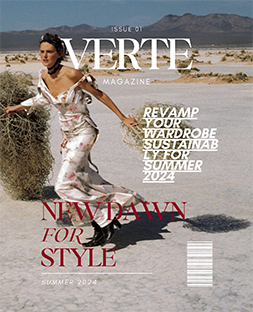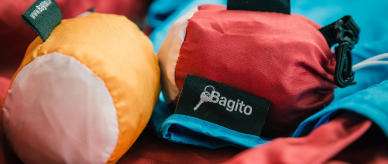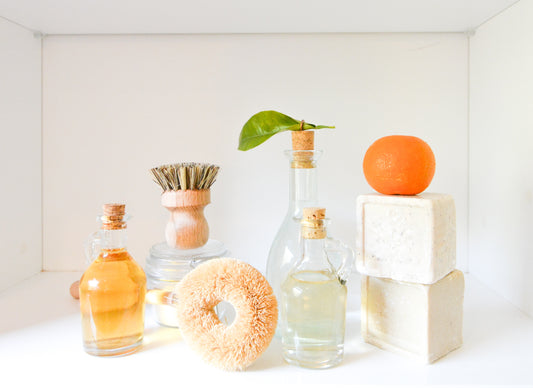A better rule of thumb: if you wouldn’t eat it, don’t apply it to your skin. Given the thousands of chemicals found in the products lining bathroom counters and store shelves, scanning ingredient lists and identifying each and every one that could pose a threat is challenging, to say the least. So, to start, focus on some of the most widely used and troubling chemicals (some of which are on the hit list of Senators Feinstein and Collins should their bill pass) found in personal care items. Below, a list of the top ten ingredients avoid.
DEA/TEA/MEA
Carcinogen
Abbreviations for diethanolamine, triethanolamine and monoethanolamine, all of which are ethanolamines—ammonia-based compounds used as emulsifiers and foaming agents in cosmetics, shampoos, soaps, body washes, shaving creams, fragrances and sunscreen. The International Agency for Research on Cancer warns that DEA can react with nitrites in other products to form a carcinogenic combination; as a result, the European Commission restricts its use. TEA and MEA are also believed to pose the same danger. Try using this all natural face and body soap cleanser using clean ingredients.
All-Natural Charcoal Detox Face & Body Soap Cleanser – Verte Mode

Fragrance/parfum
Unregulated ingredient that often includes harmful chemicals and carcinogens
An umbrella term for the sometimes hundreds of constituents that make up a particular fragrance, none of which is required by law to be listed. MADE SAFE, a nonprofit organization that tests and certifies nontoxic products, notes that “companies are legally allowed to keep individual fragrance ingredients secret because they’re deemed ‘confidential business information,’ or what’s also known as a ‘trade secret.’” Many of the ingredients used to maintain the scent and color of perfume, lip balm, and nail polish include phthalates, which have been banned in the EU and in children’s toys in California (phthalates are also used to plasticize products). Phthalates have been linked to reproductive disorders in both males and females, endocrine disruption, allergies, and breast cancer. And a study conducted by Columbia University’s Mailman School of Public Health showed that children subject to high levels of phthalates in utero were 70 percent more likely to develop asthma between the ages of 5 and 12. Another common ingredient found in fragrance is styrene, which MADE SAFE reports has also been linked to endocrine disruption. Check out this perfume made with organic ingredients.
Organic Perfume - CLASH – Verte Mode

Sodium lauryl (ether) sulfate (SLS, SLES)
Irritant, capable of producing carcinogens when mixed with other chemicals
Often used as industrial cleansers, SLS and SLES are ethoxylated surfactants, which when added to liquid decrease molecular surface tension to enhance a product’s spreading and wetting properties. As a result (and as mentioned earlier), they serve to make soap foamy and shampoo lather. SLS is known to penetrate skin and act as an irritant, with the International Journal of Toxicology reporting it “had a degenerative effect on the cell membranes because of its protein denaturing properties.” SLES is less of an irritant than SLS, but it cannot be metabolized by the liver, and thus lasts longer in the body. In addition, it can be contaminated with 1,4-dioxane, a by-product of the manufacturing process and, according to the EPA, a probable carcinogen in humans. California’s EPA labels 1,4-dioxane a neurotoxicant and kidney and respiratory toxicant. The Environmental Working Group found 1,4-dioxane in 57 percent of baby washes in the US (although as a by-product it never appears on any labels). To be safe, avoid any product containing the letters “eth.” Check out this vegan shampoo for everyday use.
Vegan Everyday Shampoo – Verte Mode

Hydroquinone
Allergen, respiratory toxin, potential carcinogen
Used to lighten and even skin tone, hydroquinone is banned in Europe, Japan, and Australia, and has been shown to enhance carcinogenic risk by damaging DNA. Studies have shown it to be a skin allergen and respiratory toxin. In addition, it can decrease skin elasticity and cause thinning of the skin.
Mineral oil
Carcinogen
A by-product of the distillation of petroleum to produce gasoline, mineral oil is used in baby oil, moisturizers, and styling gels. The World Health Organization considers mineral oil a carcinogen, the EWG reports that it can be contaminated with cancer-causing hydrocarbons during the refining process, and research published in the Journal of Investigative Dermatology reveals that the oil is linked with tumors in mice exposed to UVB. Although mineral oil never spoils and does a good job of trapping moisture, it creates a film that clogs pores, thus hindering the skin’s ability to slough away debris and excrete toxins. Use this moisturizer to keep your face feeling smooth.
'Precious Oils' Active Infusion Facial Oil – Verte Mode

Parabens (methylparaben, isobutylparaben and propylparaben)
May play a role in breast cancer development
These preservatives have been used since the 1920s to prevent growth of bacteria and mold in facial cleansers, body washes, lotions, antiperspirant, and foundation. A study published in Toxicology and Applied Pharmacology showed that the chemicals have been linked to endocrine disruption; parabens compete with estrogen for sites to attach throughout the body, thereby potentially affecting hormonal balance. According to the Journal of Applied Toxicology, research also suggests parabens may enable development of cancer in human breast tissue. Look for lotions that have clean ingredients like ultra hydrating vegan nourishments.
Ultra-Hydrating Vegan Nourish Lotion – Verte Mode

Triclosan
Can create carcinogenic chloroform, alters hormone regulation
This broad-spectrum antimicrobial agent is found in cosmetics, toothpaste, and deodorants. According to the Mayo Clinic, triclosan alters hormone regulation in research animals (and likely in humans as well) and may be harmful to the immune system. The American Medical Association advises against the use of triclosan, citing studies that show its widespread use in cleansers and hand sanitizers has contributed to the development of antibiotic-resistant germs (not to mention that the inclusion of triclosan appears to offer to no additional benefit in preventing illness as compared to plain soap and water). As noted above, it can also combine with the chlorine in tap water to create carcinogenic chloroform. The International Journal of Environmental Research and Public Health reported that the chemical poses a threat to water supplies and is having an adverse impact on fish and other wildlife. Try this aluminum free organic deodorant for a healthier swap.
Aluminum-Free Organic & Vegan Deodorant Set -Oakmoss Cypress Rose/Uns – Verte Mode

The good news
Eschewing harmful chemicals in personal care doesn’t mean you’re resigned to subpar products. Not by a long shot. High-quality skincare lines are increasingly available, both from small companies and large ones dedicated to safe and natural ingredients—for example, aspen bark extract, a plant compound that inhibits the growth of mold, bacteria and other microscopic organisms and provides a nontoxic alternative to triclosan—even if they end up costing a bit more.
And if the vast number of toxins in personal care products leaves you feeling overwhelmed or resigned, take heart. A study of teenage girls conducted by the UC Berkeley Center for Environmental Research and Children’s Health showed that after just three days of using products free of hormone-disrupting chemicals, levels dropped by as much as 45 percent. Which, if you think about it, is a pretty high rate of return on a small investment in better health.













